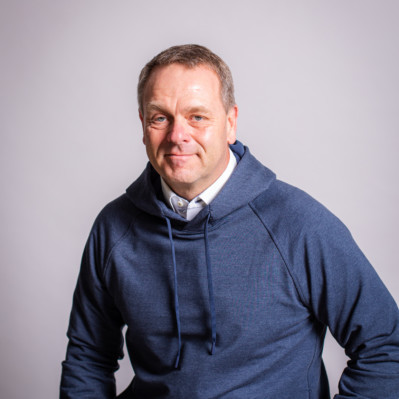Sustainable building – from brilliant ideas to everyday practices
Ladies and gentlemen,
The first global Sustainable Building conference was held in Vancouver in 1994. After that, sustainable building conferences were organized every four years, and from 2005, every three years. In the recent years, also regional conferences like this one here in Espoo have been organized. So we have every reason to ask: what has been achieved?
It is clear that we know much more about the mechanisms behind ecological impacts of land use and construction. We know about the crucial role the built environment has on climate change and about the negative effects of urban sprawl. We have developed renewable energy techniques, passive house concepts and many other environmental technologies and products.
But, are we really closer to achieving a sustainable built environment?
My short answer is yes, but we still have a long way to go. Given our foremost challenge of climate change, I would say we have a huge task ahead of us if we are going to reach our targets.
At this moment, we need three things: 1) a more comprehensive and holistic view of sustainability, 2) more target-oriented public policies, and 3) a more user-oriented approach.
Holistic view
A more comprehensive view means that we must widen the scope of sustainability from a product, system or an individual building scale to the whole community scale. An individual building must always be seen as a part of it´s surrounding environment. We have ample evidence that land use, urban structure and the location of different operations and activities have a profound effect on the greenhouse gas emissions.
At the same time, we have to widen the focus from ecological aspects also to social, cultural and economic sustainability. This means that environmental solutions should always be considered with a view to human health and well-being, safety and economic aspects. We can easily agree that mitigating climate change means developing new technologies, structures and products, but we must also realize that improving energy efficiency in the building stock creates a threat of energy poverty or destruction of cultural values. Not to mention what the impact will be on the global economy.
A good example of a holistic approach in Finland is Sitra’s Low2No sustainable development design competition for a carbon neutral district in Jätkäsaari, Helsinki. Along with the ambitious target of finding solutions for low- and no-carbon buildings in the district, the winning multi-national design team is also commissioned to find solutions for improving the living conditions of future residents.
SB Policies
Let’s now turn to the second issue – public policies. When we talk about environmental problems, we talk about global issues like climate change or the thickness of the ozone layer, or we talk about local issues like agricultural runoff [groundwater pollution] or the lack of water.
Reaching the target of a sustainable built environment calls for actions on all levels of society i.e. on the international, national, local and individual levels. The chain of sustainability is as strong as its weakest link. That is why it is up to national governments and local administration to hold it all together. To do so means having a comprehensive, co-ordinated and target-oriented policy on sustainable building. In Finland the first comprehensive policy for this was the Government Programme for Ecologically Sustainable Building in 1998. In this programme we set a series of measures in order to pursue a more environmentally sound built environment.
At the European level, as most of you know, the European Union has taken determined steps to mitigate climate change. One of the latest policy actions is the recast of the Energy Performance of Buildings directive last spring. The new directive sets ambitious energy requirements for all new building and for major renovations in EU member states to implement. As a member of the European Union, Finland is also steadily changing its energy-efficiency demands towards a low-energy and passive house standards.
New, strict energy requirements lay down a good foundation for raising the energy efficiency level in new buildings. This is, however, not enough. We have to encourage developers to do even more. We have found that energy certificates and voluntary tools like environmental classifications can be useful means. Environmental assessment methods like LEED, BREEAM or Finland’s Promise environmental assessment and classification system offer good support to national policies because they provide a vision of solutions that are better than regulatory demands alone. Besides regulation and assessment tools, we need to make sure, of course, that there is enough skilled labour and technical solutions available, not to mention well-functioning administration. A good policy is a successful mixture of co-ordinated actions on different sectors.
In Europe, the existing building stock has the greatest potential for reducing greenhouse gas emissions, but it is also the greatest challenge. The Energy Performance of Buildings directive sets energy-efficiency requirements also for major renovations to be implemented in EU member states. Energy efficiency in existing buildings will not be improved, however, unless building owners are willing and motivated to do the necessary repairs and renovations. Our chief task in the near future is finding a suitable policy toolbox for the motivation.
Right now we are working on the final report of an action programme called ERA17 – for an energy-smart built environment 2017. This programme includes an intensive, co-operative and innovative process seeking tools for our future policy toolbox to mitigate climate change. I am convinced that efforts like this are almost inevitable on the national level worldwide, if we are going to solve the multitude of problems in our future. We also need more studies on influential national and local policies.
User-oriented approach
The third issue I want to highlight today is perhaps the most important and an immediate precondition for reaching a sustainable built environment. No matter how brilliant the research study and how accurate the scientific information produced, all ecological ideas need a user application, be it a policy tool, a calculation method or a new environmentally beneficial technique.
Today, we know a lot about causes of damage to ecological systems and the resulting effects. We also know that in reference to mitigation of climate change, the time frame is limited. For this reason, we urgently need new technologies and practical applications to be developed based on the current knowledge. This is a scientific conference and it is not up to researchers to develop products. However, we also need research work to incorporate more information on human behaviour and the acceptability of ecological ideas. Too often a study on sustainable building is concluded without also doing a feasibility study.
In several surveys, we Finns are found to have a very positive attitude towards environmental ideas. Yet, at the same time, not so many of us are eager to compromise on their own living standards for the common good. This sends a clear message about the need for environmentally beneficial products and systems that also take into account peoples’ personal needs.
Choice is another key component. People want the opportunity to make choices and find their own way of living an environmentally friendly lifestyle. But, frequently, we policymakers tend to forget this fact and we formulate our policies on too few technical solutions. A crucial precondition for making environmental choices is to have sufficient and clear information on different alternatives. This brings us back to environmental classification systems which provide opportunities for making conscious choices based on measured environmental impacts. The energy efficiency certificate with an energy label based on the EPBD has the same kind of effect on consumer behaviour.
Energy efficiency, renewable energy production and other environmentally beneficial solutions are big business today and it is obvious that they will flourish even stronger in the future. In fact, one can say that an environmentally friendly profile for a business is a precondition for competing internationally in the construction sector. This is why I urge researchers to keep an open mind and actively seek ways to cooperate with the business sector. Co-operation between the business world and research institutions draws a direct connection to consumers and to economic imperatives that lead to user friendly technical solutions.
It’s also time now for environmental technology companies to grow up and move forward. We have too many examples of ”environmentally beneficial” products that seem to even increase the environmental load instead of lessening it, because these products often are too complicated to use or too difficult to maintain.
Our most severe environmental problems, especially climate change, are worldwide problems. Solutions to these problems are thus often applicable across country borders. This is why conferences like this and close co-operation between nations on environmental issues are important. The pursuit of better environmental technology and more environmentally beneficial products is a competition where everybody wins. What we need is more open-minded product development, more courage in risk-taking, and more pilot projects and demonstration buildings. This is an area where we Finns have a lot to learn from other European countries and especially from the United States.
As I’m the Finnish housing minister, I should also speak about what we are good at. Finland is known as an expert in information technology. IT know-how is and probably will be our best export product in sustainable building now and into the future. The role of IT is essential in customer orientation in sustainable building. Environmental impacts of land use, construction and products are very complex by nature. With the use of information technology such as assessment calculations, 3D design, building information modeling (BIM), and smart metering these complicated impacts can be modified to design tools and user-friendly environmental technology. In our vision we see a day when it is possible to experience a sustainable built environment before the actual construction work even starts, that is, virtually.
This conference is mainly for experts, or dare I say ”believers”. Our foremost task in the future is to make sustainable ideas become everyday practices. The main challenge is to get the ”unbelievers” to live sustainably. When that happens, we will be very close to a sustainable society.
Ladies and gentlemen,
This regional SB2010 conference here in Espoo can be viewed as a Finnish ”dress rehearsal” for next year’s global SB11 conference in Helsinki. I’m sure you’re aware, however, that in the theatre world, the dress rehearsal of a play can often be the most refreshing and energizing performance. I hope that you keep this in mind when attending the conference sessions, because, if you do, this event will be even more innovative, full of cooperation and motivation.



